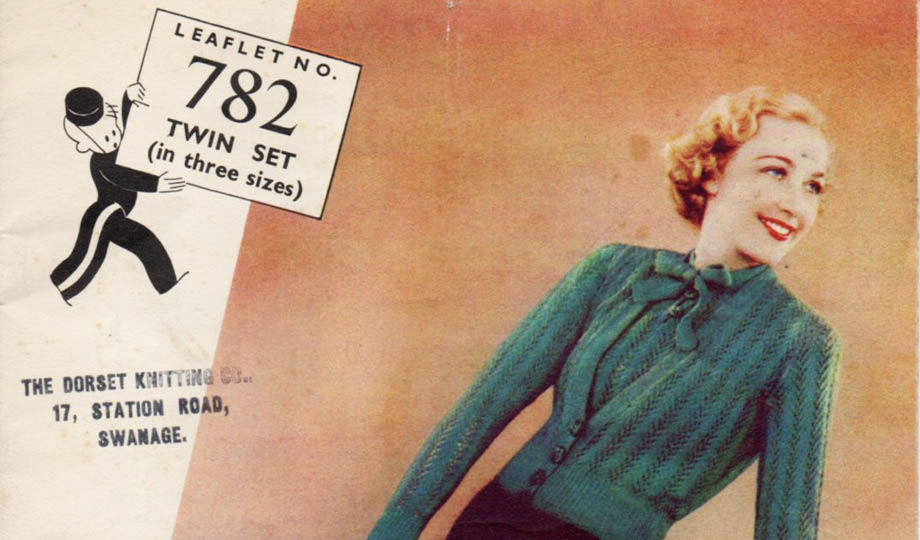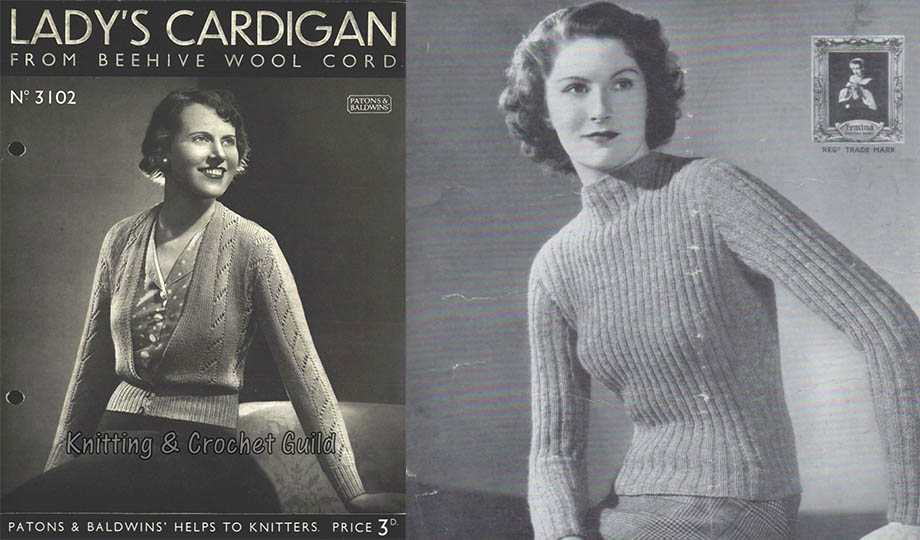Crowdsource project enlists enthusiasts to unpick trends
Knitters and knitwear fans are asked to join together online to unravel the craft’s developments and emerging trends over the twentieth century.
Volunteers will get exclusive access to 5,000 fascinating vintage images from knitting pattern leaflets in the Knitting & Crochet Guild’s archive – the UK’s biggest bunch of all things crochet and knit.
From quaint to kitsch, the online images unfurl a marvellous visual journey stretching decades and offer a unique peek at widely unseen everyday British domestic life.
By asking people questions about them, The Knitting Leaflet Project will pull together a rich story showing how knitwear fashions morphed throughout the 1900s to the 1980s.
“I’m really excited about this,” said Dr Ellie Reed, lecturer in English at Brunel University London. “By using online crowdsourcing to get people to classify these thousands of rare cultural artefacts, we’ll reveal new insights into how knitting and knitwear evolved over the twentieth century.” Dr Reed, who researches women’s magazines added: “We’ll also shine new light on the lifestyles and identities of the ordinary women, at whom pattern leaflets were targeted.”


In the decades between 1900 and the 1980s, knitting, which gets its name from the word ‘knot’, became a national mania, catapulting knitwear into high fashion. The so-called domestic craft was a big part of life in twentieth century Britain. Knitting patterns were all over magazines and tucked inside newspapers, and mass-produced knitting pattern leaflets printed by yarn manufacturers were sold in wool shops nationwide. Like recipe cards given away in grocery stores, knitting leaflets had making instructions inside, with a picture of the finished jumper or scarf on the front.
Decades later, in 2021 lockdown cast the craft into something of a resurgence, with John Lewis reporting demand for needles and wool spiked nearly 90% that August – helped along by pictures of British diver Tom Daley happily knitting poolside at the Tokyo Olympics.
To cast light on the part pattern leaflets played in how knitting and knitwear developed over the twentieth century, Dr Reed's The Knitting Leaflet Project launched last week on citizen science web portal, Zooniverse. Volunteers will help collect data by answering questions about the pictures on the leaflets. Non-knitters, novices, hobbyists, trend-spotters and knitting aficionados can all join in, and people can also comment on leaflets and share memories.
Questions range from simply saying whether it is a garment, something for the home or a pet, to who was aimed at – for instance, an adult man, adult woman, teenage girl, teenage boy, child, baby, etc. Then there’s slightly more detailed questions like what part of the body it is for. Fashion-savvy people can look at things like hairstyles, look and shapes and say if they think it was published in the 1940s, the 1970s, and so on. And knitting gurus can help pinpoint design details like cabling, sleeve and collar shapes and button styles.
Their answers will go into a database where Dr Reed can plot changes and trends, such as when certain garments went in and out of fashion. For instance, perhaps patterns for cardigans suddenly became very popular in the 1920s, perhaps baby clothes had a moment in the 1950s, or picture jumpers were a thing in the 1970s.
“I have a vague idea of a few things I'm expecting,” revealed Dr Reed. “Jumpers got really fashionable during the 1920s, in what was known as the sweater craze. So, I’m expecting to see a massive increase in jumper patterns during the 1920s. From what I’ve seen, Fair Isle might become a bit more popular during the 1940s. Certain design attributes will probably come up as well – for instance, cardigan and jumpers from the 1940s often have these quite square, ‘military-style’ shoulders. I’m mostly curious to see what comes up!”
To keep people hooked, the portal will also host talkboards where people can chat, ask questions and share advice. “I’m really excited about this bit of it,” Dr Reed said, “because a there will be a lot of people who either use these patterns themselves or will remember their mums, their grandmas, big sisters, whoever, using them as well. Maybe they remember the Christmas jumper their mum knitted their dad or suchlike. So, I hope to capture memories. There's a lot of knowledge out there too, which I want to preserve.”
Images courtesy of the Knitting & Crochet Guild
Watch Ellie’s talk about 1920s and 1930s knittingopens new window
Watch Ellie’s talk about First World War knittingopens new window